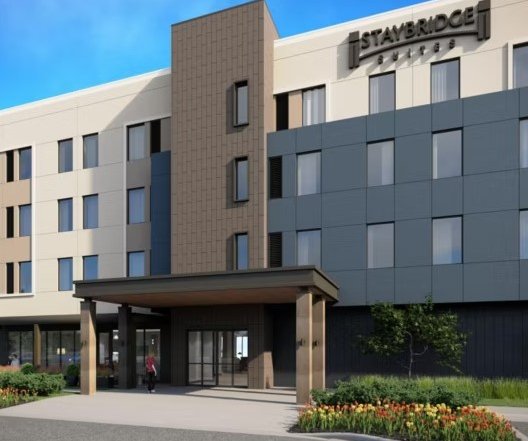The most effective law enforcement tool the Manteca Police can be armed with to address quality of life crimes and low level misdemeanors committed by the homeless might just be a drop-in shelter.
That runs counter to the reasoning many of those in opposition to the concept espouse that “if you build it, they will come”.
At last week’s Manteca City Council meeting opponents to the city buying 8 acres On South Main Street with the intent of placing a homeless navigation center/drop in shelter and transitional housing on the eastbound most portion made that point.
And to re-enforce it, they suggested if Manteca offers such service and nearby cities don’t in their own communities it will serve as a lure to bring homeless to Manteca or for nearby cities to send them here.
They also argued they were not against the project per se but the location contending it would be better to locate it on the edge of the city or in the surrounding countryside and not near one of Manteca’s main corridors.
They again stressed their growing unease to have the homeless whose ranks contain the mentally ill and substance addicts walking through their neighborhoods to the point they won’t let their children walk unaccompanied to nearby stores after incidents where homeless have yelled at and aggressively approached pedestrians.
And they stated the obvious. A council election is coming up as they do every two years and they would work to defeat any elected official that helped move the South Main Street site forward.
Yet the council — on a 4-1 vote with Councilman Dave Breitenbucher dissenting — set in motion the process that will enable the city to purchase the property for $1.8 million.
“No one want to have a navigation center anywhere near them, I get that,” said Councilman Charlie Halford.
Then Halford went on to make three points that drove the council majority to move forward.
*Without having beds available at a drop in shelter law enforcement has minimal ability to address many of the misdemeanor crimes homeless commit that people want enforced.
*Navigation centers, to be effective, must be in close proximity where homeless naturally congregate so they can access services.
*The city has spent the better part of five years vetting almost a dozen sites before determining the South Main Street location is the best situated in terms of location and ability to be secured and the least problematic in terms of creating issues for neighbors.
How challenging finding a location can be was underscored by Breitenbucher. He stressed he was not against a homeless navigation center just the location he felt was “too close to downtown”. Ironically the location Breitenbucher has long advocated — city owned property on Wetmore Street by the water tower — is even closer to downtown as it is directly across from the Manteca Transit Center just a block from the heart of the city at Yosemite Avenue and Main Street.
Manteca in order to more effectively enforce a wide array of homeless issues that either contribute to low level crimes or create the perception that they do such as illegal homeless encampments must provide the option first for homeless to access an available shelter bed.
It is an edict that handcuffs law enforcement not just in Manteca but every community within the jurisdiction of the 9th District Court of Appeals that made the ruling. The states under the legal umbrella of the 9th District are California, Nevada, Arizona, Montana, Idaho, Oregon, Washington, Hawaii, and Alaska.
Several opponents lauded Tracy’s decision to locate that city’s future navigation center and homeless shelter on the northern edge of that city near the former Holly Sugar refinery.
Homeless experts note the California cities that have the most success with navigation centers locate them near services essential for those on the streets transitioning back to housing themselves. That means close proximity to bus service to access jobs, educational opportunities, and additional health services not offered at a navigation center.
It is also key that the drop in shelter be close to the type of areas that most homeless congregate naturally such as commercial areas and areas conducive to encampments to increase the odds for the homeless to initiate contact. Accessibility and visibility has proven to be essential in other cities to get people to take the initial steps to get off the streets.
As far as nearby cities not stepping up Modesto, Stockton, and Turlock have shelters while Tracy and Manteca are now in the process of adding them.
Mayor Ben Cantu again stressed that majority of the feedback he is receiving from citizens via social media and in person is for the city to take the necessary steps to allow them to further address homeless issues sooner than later.
Assuming the city can indeed get permission within six weeks to officially execute the purchase process arguably the absolute earliest something could be in place on the South Main Street site would be at late 2022.
That would assume the city would go with Sprung Structures that are often deployed for emergency housing after natural disasters or for use as “long-term” options for churches and other uses while working toward brick and mortar structures.
Sprung Structures have rated minimum lives of 20 years. Besides going up quickly they have a significantly lower upfront cost.
It also assumes utilities — water, sewer, and power — could be accessed from Carnegie Court.
The site itself is flat and needs no demolition. It does need basic grading and ground improvements as well as a 7-foot masonry wall that the city has consistently been promising to assure the only way to access the site — legally or otherwise — is by traveling down Carnegie Avenue to Carnegie Court.
To contact Dennis Wyatt, email dwyatt@mantecabulletin.com









